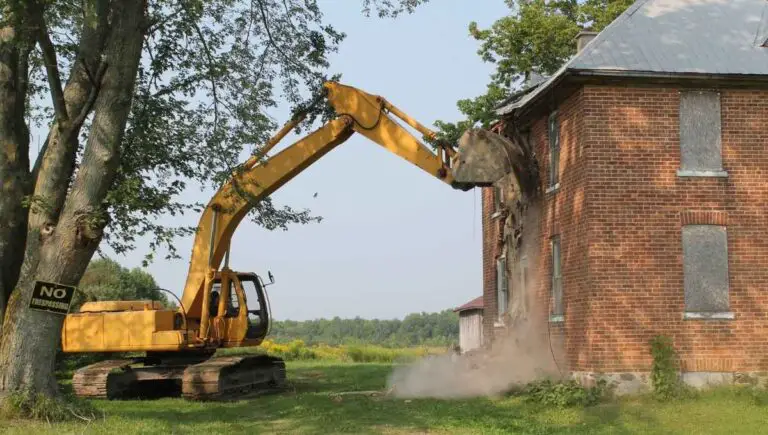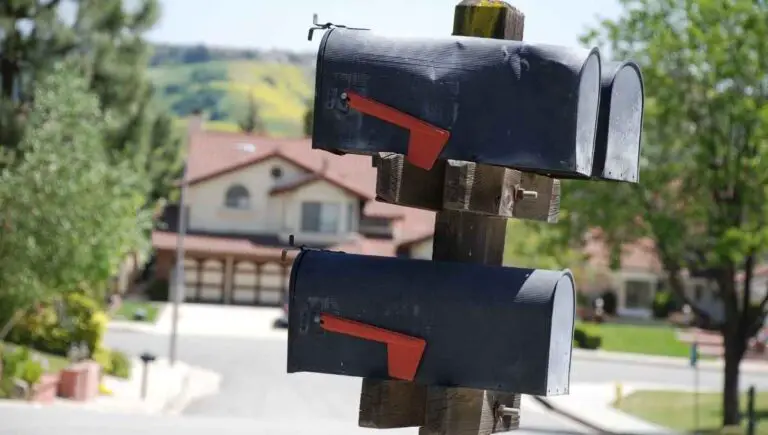Do You Need a Permit to Dig a Pond? (Do This Before Digging)

If you’re in the mood to spice up your yard, a pond can be a great idea. They’re eye-catching, aesthetically pleasing, and provide a habitat for fish, frogs, and other wildlife. But, do you need a permit before you start digging a pond?
If you’re going to dig a pond on your property, it is very likely that you’ll need to get the proper permits before doing so. You can check your local zoning laws for a complete list of necessary permits, as the rules differ for each city.
But knowing when you need a permit to build is only a small part of digging your pond. Check out some common pond-related questions below, and you’ll soon be on your way to having the pond of your dreams!
This post contains affiliate links from Amazon and other stores. This means Yard Blogger may earn a commission if you make a purchase using any of our links. Please refer to our full affiliate disclosure policy for full details.
Here’s a Quick Pro Tip!
There are many different permits that you may need when building your pond and they all differ depending on where you live. However, a common regulation that is required before you can receive a permit is that the pond needs to be fenced in.
Thankfully, there are many options that you can easily purchase!
Here are some of our favorites from Amazon:
1. Decorative Wood Fence – Adds a very natural tone to your pond
2. Metal Decorative Fence – A charming and classic option
3. Metal Fence and Gate – Perfect for larger ponds
Where to Dig
If you’re just starting out on your pond journey, you’re probably wondering where you want to build. Thankfully, you’ve got a lot of options! The front, side, and back yard all have promise. However, what works best for you may not be best for the pond!
Can I Just Dig a Hole for a Pond?
Unfortunately, you cannot just dig a hole for a pond. The process is much more extensive than that. The first step is to check with your local zoning commission to ensure if you need a permit.
The United States Department of Agriculture, or USDA, offers an 85-page handbook that outlines all necessary requirements for building a pond.
Just in case you don’t feel like reading that much, we’re going to outline some top tips later on in the article.
The EPA (the United States Environmental Protection Agency) is a great resource to make sure you’re not accidentally digging in a spot that is protected. For example, your land may be in an area where protected animals and plants live and is, therefore, ineligible for building.
Can You Build a Pond Anywhere?
You’ll want to put some thought into where you build your pond. Making your pond aesthetically pleasing is a big part of your building project, but you also want to make sure that your permit covers your build spot.
In addition, you’ll want to ensure that wherever you build is safe and accessible.
There are a few places where you cannot build a pond, regardless of permit status. For example, in most areas, you cannot build your pond within 10 feet of a residence.
Additionally, most cities have ordinances that restrict the building of ponds in front yards based on the depth of the pond.
Here are some tips for strategically placing a pond:
- Build your pond on a level site for best results.
- Build in an open area without many trees.
- Build in a place that does not receive a lot of strong wind.
- Build in a place that receives a lot of sun.
You might also enjoy our post on If You Can Dig a Pond on Your Property
Can You Build a Pond in Your Backyard?
The backyard is probably the wisest place to build your new pond, assuming your yard is big enough to house it. As with any large building project, your local zoning commission and HOA (if applicable) will also want notice of the building project.
You may want to consider reaching out to a professional landscape architect or construction team to help you determine the best place for your new pond.
Not only will they be knowledgeable about the necessary permits, but they can also sometimes speed up the permit process. Sometimes, it pays to know a guy!
Plans and Permits for a New Pond
Is all this talk of permits and landscape architects making your head spin? We’ll simplify it, so you can have the pond of your dreams as quickly as possible!
What Are the Backyard Pond Regulations?
Common pond regulations will identify how close the pond can be to your house and how deep it can be. Additionally, depending on where you live, what you can put in the pond will also be identified.
It’s always best practice to check with your local and state statutes before starting any new building project since the regulations will differ depending on where you live.
For example, in Michigan, ponds need to have a side slope ratio of 1:3 (1 vertical foot to 3 horizontal) and must avoid areas where known populations of plants or animals are endangered or extinct.
A common regulation for ponds is that the pond needs to be fenced in. This protects children or small animals from accidentally falling into the pond.
Here are some of our favorite pond fences from Amazon:
- Decorative Wood Fence – Adds a very natural tone to your pond
- Metal Decorative Fence – A charming and classic option
- Metal Fence and Gate – Perfect for larger ponds
Ensure that your fence follows the outlined regulations before you purchase one.
Do I Need Planning Permission to Dig a Pond?
If in doubt, it’s better to ask permission before digging. Not asking can result in heavy fines and the possibility of having to fill your pond in. Check with your local zoning board or HOA before starting!
You may not even realize it, but your plans could potentially be in a protected area. If you build in an area that is protected, you could face thousands of dollars in fines. You may also have to stop your building project. Yikes!
Do I Need a Permit to Dig a Pond?
If you’re wondering if you need a permit to dig a pond, it’s always wise to check with your local zoning commission and any state or federal wildlife protection agencies in your area before building.
A good basic rule to follow is that if you’re going to move more than 2,500 square feet of soil, you will need a permit for it. Your state probably has a statute that outlines the requirements to decide if you need a permit.
For example, check out this guide from Wisconsin regarding the regulations on building a pond.
What Type of Permit Do I Need to Dig a Pond?
Common permits that you may need to dig a pond include a grading permit to ensure your pond is the appropriate slope and a permit that ensures you are stocking your pond properly.
You may need additional permits depending on where you live. Suppose you live in a protected area, for example, in wetlands. In that case, you will need to determine if your build will affect the surrounding waterways.
In Pennsylvania, you also have to check for soil erosion, and earth-moving activities permit before building. PennState has a great site regarding the necessary permits for their state.
Do I Need a Grading Permit to Dig a Pond?
You may need a grading permit to dig a pond. It is always best practice to check with your local HOA and any local and state governments before starting a project like this as the rules and regulations differ depending on where you live.
Remember, not having the necessary permits can be a big issue. You could face hefty fines and potentially have to stop your project. Also, if you do not have the grading correct on your pond, you may have structural issues in the future.
You might also enjoy our post on If You Need a Permit to Regrade Your Yard
What Does a Grading Permit Consist Of?
A grading permit is issued by the government (typically a city planner or zoning commission) that allows a land-disturbing activity to comply with a grading plan. You must complete a grading plan before you receive your permit.
It may be in your best interest to contact a licensed architect or civil engineer to develop your grading plan. They will be more aware of the issues surrounding the quality of grading material and soil removal and fill for your new pond.
Do I Need a Permit to Stock a Pond?
Once your pond is built, you’ll likely want to stock it with fish and plants. In most cases, a permit is necessary, so be sure to check your local fish and wildlife services before stocking.
If your pond is entirely private and not connected to any other bodies of water, you may not need a permit.
However, a permit becomes necessary if there are any connections, as government agencies regulate fish, mollusk, and crustacean stocking to protect native and legally established aquatic species.
The Department of Environmental Conservation, or DEC, of New York, has strict standards for pond stocking.
They offer a variety of permits for fish stocking, including a basic stock permit, farm fishing pond license, fishing preserve license, and triploid grass carp stocking.
Can You Stock Your Own Pond?
You’ll want to do some research before you decide what to stock in your pond. First, be sure to check that the fish you want can survive in your pond. Factors to consider include climate, temperament of fish, established ecosystem, and the length and depth of the pond.
The best course of action when choosing what to stock in your pond is to talk to an expert. Make sure that your fish come from a licensed commercial fish hatchery.
Stocking your pond with locally caught fish can be dangerous as they can spread disease.
How Do I Get Permits for My Pond?
You can get information on necessary permits for your pond by checking with the U.S. Fish and Wildlife Service. You may also want to check your local HOA and or zoning board for any additional requirements.
If your pond is entirely private, does not connect to any other bodies of water, and isn’t on protected grounds, you may not need a permit at all. That being said, it is always wise to ensure you don’t need any permits before digging.
Who You Need to Inform About Your New Pond
Now that you’re a little more familiar with the permits for your new pond, who else needs to know your plans? Obviously, you’ve informed the zoning commission, but what about friends, neighbors, and the HOA?
Don’t worry, we’ve got your back! Here are some tips and tricks to help you decide who needs to know.
Do I Need Approval From My HOA to Dig a Pond?
If you’re part of an HOA, it’s definitely a smart plan to talk to them before you dig or build anything on your property. You wouldn’t want to complete your project only to have to undo it after!
Remember, you will have to live with your neighbors and HOA long after your pond is finished. It is wise to make sure you have approval from all necessary bodies before starting any new projects.
Should I Let My Neighbors Know That I Am Digging a Pond?
While you may not need to legally inform your neighbors that you’re digging a new pond, telling them of any construction project is always best practice. This can prevent tensions from developing.
Look at it from their point of view. Not only are you starting a large, noisy project, but the completed project will change the landscape.
For example, if your neighbors have kids, it may be wise to inform them that there is now a body of water on your property.
Do I Have to Let My Utility Companies Know That I Am Digging a Pond?
Before you dig, you need to check with local utility companies to ensure you will not dig up an electrical or gas line. This is not optional. Failure to check for utility lines can result in explosions, power cuts, and many other less than ideal outcomes.
If you’re not sure who you need to contact, start by calling 811. 811 may be able to contact your utility companies for you, and they will send someone to come and mark any utilities on your property to prevent a digging disaster!
You might also enjoy our post on Koi Pond Plants For Your Backyard Paradise
Planning for New Pond Permits
It may seem that getting the permits for a new pond is more aggravating than rewarding, but permits are typically necessary. Next, we will answer some common questions surrounding the necessity of pond permits.
What Do I Need to Receive Pond Permits?
You can check with Fish and Wildlife Services for any pond permits needed in conservation areas. You can also find permit information by talking to your county’s zoning commission or HOA.
Mostly what you’ll need to receive your pond permits is time. Unfortunately, some permits can take as long as thirty to ninety days to get passed through the proper channels and back to you.
They’re worth it, though, so be sure and wait for them!
Why Do I Need Permits to Dig a Pond?
While building a pond might just sound like a fun summer project for you, it can actually have a lot of environmental impacts, especially if you stock the pond. In addition, adding a new water source can attract more animals to the area.
Additionally, if you’re not careful where and how you build, you can be in for many problems down the road.
Having a permit and making sure your plans have been verified with a professional can make a lot of those headaches disappear before they even start!
Why Do I Need Permits to Put Fish in My Pond?
You need permits to put fish in your pond because state and federal governments keep an eye on how many and what types of fish are stocked in residential or private ponds to keep populations in check.
Also, having non-native fish stocked in a pond that can reach another body of water can wreak havoc in the local ecosystem.
As the North Carolina Wildlife Resources Commission stated, “The purpose of this regulation is to protect native or legally established aquatic species from the potentially damaging effects of unauthorized stockings.”
Time, Money, and Permits
While they may seem like frustrating complications, permits are an important step in starting a new project. It doesn’t have to cost an arm and a leg either! We’ve got the answers to some common permit questions.
How Long Does It Take To Get Permits to Dig a Pond?
In most cases, once you’ve turned in the paperwork, you can expect to receive your permits in a few weeks, but it can take as much as a couple of months if the system is backed up.
How long it takes to get your permits will vary depending on which permits are necessary for your area.
One way to potentially expedite the permit process is to go through a professional architect or landscape developer.
Both professions are used to the process of receiving permits and may be able to navigate the red tape quicker than you will be able to on your own.
How Much Will Permits Cost to Dig a Pond?
If your build does require a permit or multiple permits, you could be looking at up to $50/acre of land. On the other hand, if you’re building a 100% private pond, there may be no cost (or permits) for the build.
Check with your county’s zoning department to see if they have a list of necessary permits and pricing. Most cities and towns will have an ordinance regarding permits.
Check out this example from LaPorte, Indiana, which outlines the prices for various building permits.
You might also enjoy our post on If You Need a Permit to Dig a Well on Your Property
Related Questions
How Deep Should a Pond Be for Frogs?
Frogs do not need a super deep pond. Most frogs can survive in as little as three feet of water. This is deep enough for them to be out of reach of most of their major predators.
One way to ensure frogs and other pond creatures are safe is to build various depths into your pond. This gives them a shallow area to hang out and get some sunlight and deeper areas to hide from predators.
How Do I Stock a Small Pond?
The easiest way to stock a small pond is to talk to a hatchery. They can provide you with the highest quality fish and guarantee that the fish will not disrupt the local ecosystem.
Do not just go to the local river and catch fish from it to stock your pond. While this may be cheaper, you run the risk of polluting your new pond, and if the fish you catch have any disease, you can affect your pond.
Final Thoughts
The process of digging a pond on your property can be daunting. Getting all the necessary permits may sound like a big headache you want to avoid, but they are essential.
Permits make sure you are safe while working on your project.
Permits also ensure you are not disrupting any wildlife or protected lands with your project. It’s important to not disturb the natural ecosystem more than necessary when building.
Hopefully, this information will help you get a strong start on your journey and enjoy your new pond!







